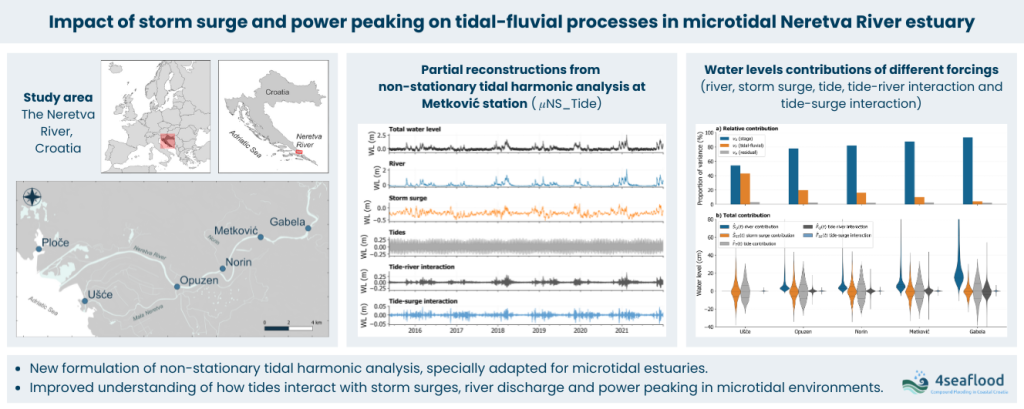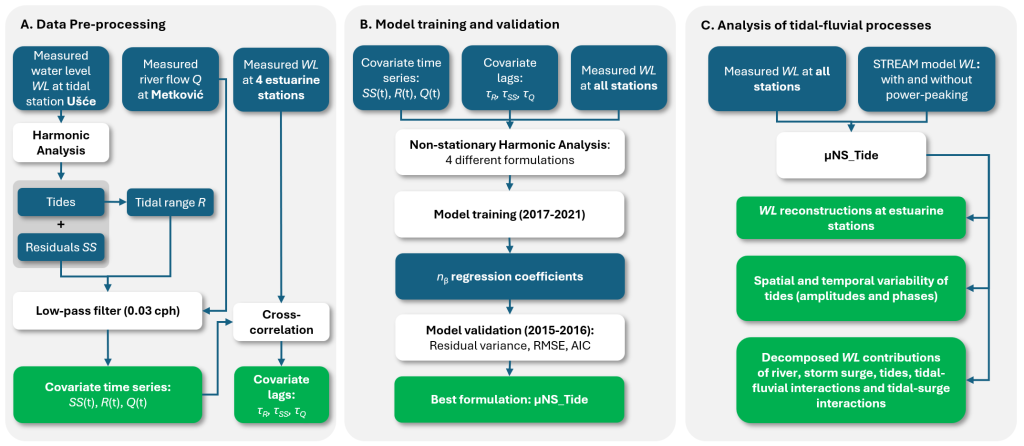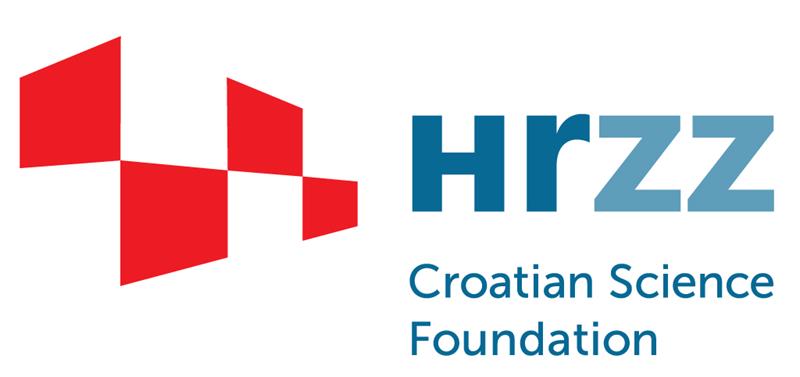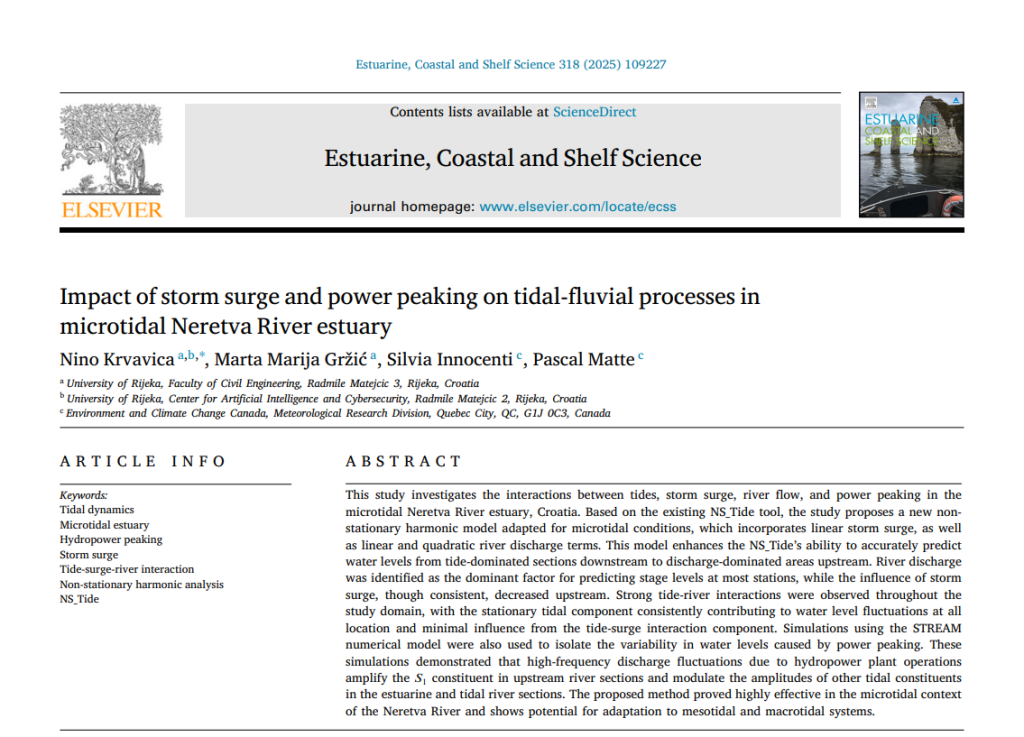Impact of Storm Surge and Power Peaking on Tidal-Fluvial Processes in the Microtidal Neretva River Estuary
We conducted a comprehensive study on the Neretva River (Croatia) to understand how tides, storm surge, and river flow interact to influence water levels along the estuary. To achieve this, we enhanced the existing non-stationary harmonic tidal analysis model, NS_Tide, by incorporating terms tailored to capture hydrodynamic processes in microtidal environments. This improvement allows for more accurate predictions of water levels, extending from the coastal zones—where the tide is most pronounced—to upstream sections dominated by river discharge.
Our findings reveal that river discharge is the primary factor affecting water levels across most parts of the estuary, whereas storm surge effects, although notable near the mouth, diminish further inland. We also found that hydropower peaking—the sudden release of water from dams to meet electricity demand—amplifies certain tidal frequencies upstream, influencing water-level patterns throughout the system.
These insights have key implications for flood risk analysis, as more precise forecasts support better planning and design of protective infrastructure. They also inform water management and irrigation strategies and contribute to ecological preservation efforts by clarifying how various forces drive water-level changes.
This research—published in the journal Estuarine, Coastal and Shelf Science—is the result of collaboration between Environment and Climate Change Canada (ECCC) and the University of Rijeka, Faculty of Civil Engineering. Access it here.




